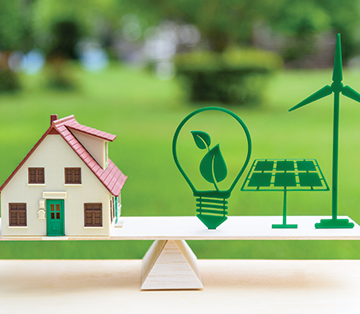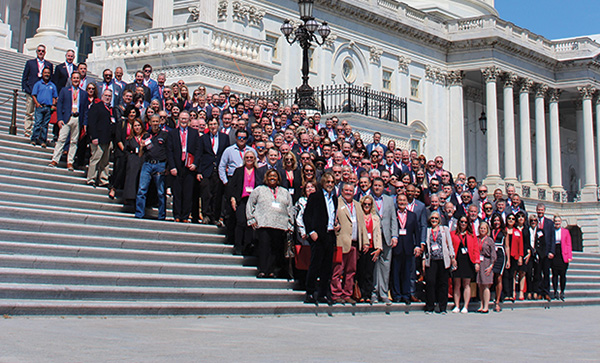
The issue of sustainability in the construction industry, including the roofing industry, comes up frequently in conversations among building owners, designers, manufacturers, distributors, contractors, and representatives from standards-setting organizations and regulatory and code groups. Sustainability is an important issue, and the roofing industry has put forth several efforts to address it.
What is sustainability?
The concept of sustainability is not new. The National Environmental Policy Act of 1969 committed the U.S. to sustainability, declaring it a national policy “to create and maintain conditions under which humans and nature can exist in productive harmony, that permit fulfilling the social, economic and other requirements of present and future generations.”
In the years since, the public’s interest in sustainability has broadened. In addition, sustainability practitioners are becoming more ambitious in their sustainability efforts and are sharing best practices to ensure the greatest environmental, economic and social impact.
Sustainability documentation
Product category rules, often referred to as PCRs, are defined in CAN/CSA ISO 14025-07 (R2022), “Environmental Labels and Declarations–Type III Environmental Declarations–Principles and Procedures,” as a set of specific rules, requirements and guidelines for developing environmental declarations for one or more products that can fulfill equivalent functions. PCRs determine what information should be gathered and how that information should be evaluated for an environmental declaration.
For example, ASTM International developed and maintains numerous PCRs, including those for asphalt shingles; built-up asphalt membranes; modified bituminous membranes; glass mat gypsum panels; single-ply roof membranes; and water-resistive and air barriers. Other organizations also publish their own PCRs.
Environmental product declarations, or EPDs, provide quantifiable environmental data to compare products that fulfill the same function. To create comparable EPDs, organizations must follow the rules and guidelines called for in an associated PCR. EPDs created under different PCRs generally are not comparable.
For example, ASTM International has developed and maintains several EPDs for roofing manufacturers such as Carlisle SynTec Systems, Carlisle, Pa.; Hunter Panels, Portland, Maine; Seaman Corp., Wooster, Ohio; Sika USA, Lyndhurst, NJ; SPRI; USG, Chicago; and Versico, Carlisle.
In addition, the Asphalt Roofing Manufacturers Association has developed product-specific EPDs applicable to its members’ products for asphalt shingles; hot-applied built-up membranes; torch-applied APP polymer-modified bitumen membranes; and torch-applied, hot asphalt-applied and self-adhering SBS polymer-modified bitumen membranes.
And the Polyisocyanurate Insulation Manufacturers Association has developed EPDs applicable to its members’ polyisocyanurate roof insulation, polyisocyanurate wall insulation and high-density polyisocyanurate roof insulation.
Also, NSF/ANSI 347, “Sustainability Assessment for Single Ply Roofing Membranes,” provides a point-based rating system for assessing and reporting the sustainability of single-ply membrane roof systems. Individual single-ply membrane manufacturers have sought and maintain certifications based on NSF/ANSI 347.
ASTM International’s Committee D08 on Roofing and Waterproofing is considering taking over responsibility for further development and maintenance of NSF/ANSI 347 from NSF International. Broadening the standard’s scope to include other types of membrane roof systems is one of the committee’s considerations.
Recycling
Recycling product packaging, unused materials and products, and tear-off materials also are important issues to address. Recycling asphalt shingle tear-off is becoming more commonplace, and the Construction & Demolition Recycling Association provides helpful guidelines and a list of asphalt shingle recyclers at shinglerecycling.org.
In addition, ASTM E3073, “Standard Guide for Development of Waste Management Plan for Construction, Deconstruction, or Demolition Projects,” provides guidelines for documenting construction waste disposal, and ASTM D8013-16, “Standard Guide for Establishing a Recycle Program for Roof Coverings, Roofing Membrane, and Shingle Materials,” provides guidelines for recycling roofing materials.
Closing thoughts
The roofing industry has developed a large amount of sustainability-related information. I encourage roof system designers and contractors to familiarize themselves with the information, and roof system material and product manufacturers should make their PCRs, EPDs and other sustainable-related information readily accessible. NRCA recently established a Sustainability in Roofing Committee that is considering roofing contractors’ roles in sustainability and how NRCA will communicate sustainability related information to NRCA members, the roofing industry at large and consumers.
MARK S. GRAHAM is NRCA’s vice president of technical services.
@MarkGrahamNRCA



